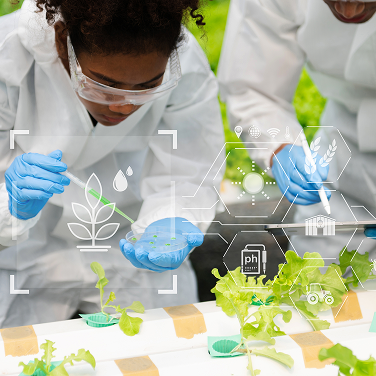A Matter of Taste: How Food Science Is Improving What We Eat & Drink
By Dawn Patton Mangine
From the rise of plant-based alternatives to the integration of shared digital data ledgers, or blockchains, in the food supply chain, advancements in sensory science, nutrition, and testing methodologies are revolutionizing the industry. These innovations not only enhance the taste and texture of food products but also ensure their nutritional adequacy and safety, paving the way for a future where personalized nutrition and transparent food sourcing become the norm.
Food and beverage science is an ever-evolving, interdisciplinary field that plays a crucial role in ensuring a safe and nutritious food supply by employing scientific principles to enhance food production, preservation, and quality. New methods of food testing help producers create safe, high-quality, and appealing food products that meet consumer demands and regulatory standards.
What’s for Dinner
With more people reducing their intake of meat, dairy, and other animal-derived products, food scientists are seeking ways to adapt quality testing for plant-based alternatives. For example, texture profile analysis (TPA) is a technique that assesses properties such as hardness, chewiness, and the cohesiveness of comestibles, or food items. Conducting sensory panels to evaluate the mouthfeel and taste of plant-based foods helps ensure they mimic the experience of eating meat to enhance consumer satisfaction.
In addition to taste and appeal, plant-based foods are tested for protein content and potential allergens, pathogens, and spoilage organisms. Advanced nutrient and allergen testing employs techniques such as high-performance liquid chromatography (HPLC), mass spectrometry (MS), and enzyme-linked immunosorbent assays (ELISA). These methods provide identification and quantification of nutrients, contaminants, and allergens to detect possible safety concerns and check for proper nutritional value.
Functional properties testing is another critical innovation, particularly used to test if plant-based ingredients can emulsify or gel. These properties are vital for formulation, helping scientists achieve the desired product consistency and stability for greater consumer acceptance.
Expecting Food to Do More
Not only do consumers expect food to appeal to their tastebuds, but they are increasingly seeking personalized dietary recommendations based on genetic profiles and health goals. Research is revealing the relationship between specific foods and their ability to promote health and prevent chronic diseases. In addition, scientists in the “food as medicine” market continue to research the role of antioxidant properties in disease and inflammation prevention.
These trends necessitate innovative testing methods to analyze nutrient levels, allergens, and other factors to tailor food choices to individual needs. In addition to tests such as HPLC, advanced genomic testing is also used to provide accurate and personalized dietary information.
Farm-to-Table Tracking Technology
In simple terms, blockchain technology allows for secure data sharing across an industry by creating digital ledgers for tracking relevant data. In the food supply chain, blockchain introduces a new level of transparency and security in food and beverage testing practices. It enables the tracking of products throughout their journey from farm to table. With blockchain, the entire journey of food and beverage items can be accurately verified, ensuring traceability and making it easier to identify any contaminants or quality issues. This advancement significantly enhances food safety, providing consumers and regulatory bodies with confidence in the integrity of the food supply.
Innovation Supports Confidence
According to Transparency Market Research, the North American food testing market is expected to grow at a compound annual growth rate (CAGR) of 7.1 percent between now and 2031 and reach more than $4.3 billion in the United States alone. Driven by consumer demand and increased concern over food safety and supply, the importance of testing innovation is difficult to overstate. Adopting food and beverage testing innovations will satisfy the various regulatory agencies involved as well as boost the confidence of consumers in terms of quality, safety, and credibility.
Dawn Patton Mangine is a Thermo Fisher Scientific staff writer.


Your destination for timely and relevant testing topics.